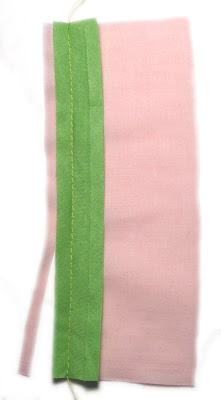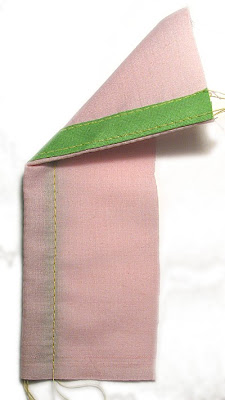
When I started sewing, one of my first projects was a simple jumper with bias-tape bound neck and armholes. After some experiences in which seam rippers figured prominently, I asked mom to put the bias tape in.
Biased (haha) by these early experiences, I regarded bias tape as a nuisance that usually ended with unwanted slivers of bias tape peeking over the edge of the finished seam, until I mastered the art of 3-step bias tape installation.

Fold open one side of the bias tape. Pin it, right side of the bias tape to the right side of your fabric, so that when you sew in the crease of the fold, your seam allowance will be 5/8" (or whatever seam allowance your pattern calls for). Sew, being sure to stay in the crease line on the bias tape. Trim off excess fabric at the seam allowance.

Fold the bias tape towards the seam allowance and iron. Stitch 1/8" or so from the edge of the bias tape that is sewn to the fabric. This line of stitching is the secret to a clean, finished edge!

Fold the bias tape over to the wrong side of fabric and stitch it close to edge of bias tape. Because of the second line of stitching, it should fold over nicely and give you a sharp edge without any bias tape showing on the right side of your fabric.







